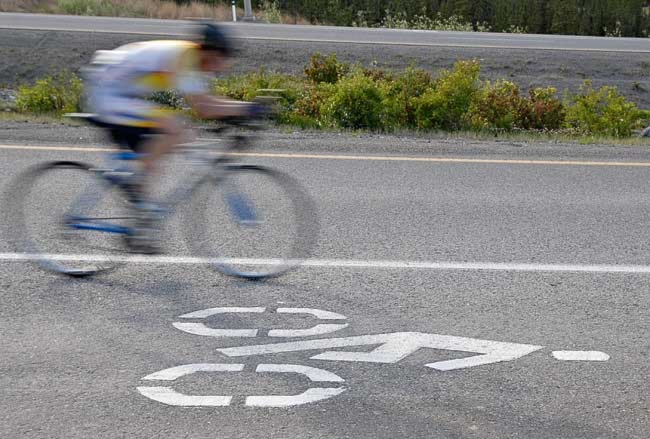Getting a ticket for riding a bicycle without a helmet in Whitehorse is comparable to winning the lottery.
Less than 20 tickets have been issued since it became mandatory for all cyclists in Whitehorse to wear helmets in July of 2003, estimates Whitehorse Bylaw Services manager David Pruden.
“I know from being in the department for 17 years, off the top of my head, since the bylaw has been in place, we probably haven’t written more than 20 tickets,” said Pruden.
“At the onset we were looking to do it through voluntary compliance and education. So for the first three years we just had officers warning people and whatnot, to make sure they wear their helmet.
“Since that point in time - the last five years - we have gone out and done a couple blitzes here and there, going out on a particular set day.”
Two factors prevent stricter enforcements, said Pruden.
Unlike leaving a parking ticket on a windshield, officers have to confront people in person to collect their name and information before issuing a ticket. Since people can become confrontational in those situations, the bylaw office prefers to have two officers work in tandem when confronting offenders - officers, often just out of high school or in college, that have a fraction of the training (and weaponry) of police officers.
“It is something where people are not happy, so we have two staff members, typically, go out and do that,” said Pruden. “We have run into confrontational situations, so we don’t want to put the officers at risk.”
Also, a lot less ground would be covered if bylaw officers had to partner up constantly.
In the same vein, the bylaw office is largely occupied with dealing with complaints from the public, said Pruden.
“It is a staffing issue; we don’t have a lot of staff to go out and deal with that issue as we are busy with many complaints.”
“The bylaw office works on a complaint basis, so that would be a self-generated thing, dealing with the bike helmets.
“We do have bike constables out there, often solo, so they are issuing pamphlets and advising people to go get a helmet. So there is a substantial effort to issue people verbal warnings.”
Of course, it seems like there are more than enough bylaw officers on the street the moment a ticket is flapping beneath your wiper-blade, but leniency can have its place.
Between 2004 and 2008, the Whitehorse hospital saw about 760 bike-related injuries, breaking down to about 150 a summer.
“Considering cycling injuries are mostly seasonal, that’s a significant number,” said Yukon’s Chief Medical Officer of Health, Dr. Brendan Hanley. “You’re looking at least two to three injuries a day.
“Most studies show the majority of injuries, especially in children, tend to be head and facial injuries. And the majority of serious injuries are head injuries and facial injuries.”
But is stricter enforcement of the helmet law the answer? At least one bike safety study argues it is not, said Hanley.
There is evidence that issuing tickets to every helmetless cyclist can discourage people from riding their bikes, as can a helmet law on its own. However, there is safety in numbers.
“We know that one thing that increases cycling safety is numbers of cyclists,” said Hanley. “The more cyclists you have on the road, the safer the cycling is because more drivers recognize there is a cycling lane - it is something to be paid attention to.
“If you have an occasional cyclist who’s struggling in traffic, that is a relatively riskier situation than if you have a hundred cyclists taking up an unidentified bike lane.”
Another study shows, while the overall number of cyclists may decrease, helmet use increases under mandatory helmet laws, even when scarcely enforced.
“There’s one study that shows that legislation for helmet use increases helmet usage, regardless of enforcement,” said Hanley. “Seems the existence of the legislation might be more important than how you enforce it.
“Obviously the ideal situation is to have hundreds of cyclists all wearing helmets,” added Hanley. “But if you had to choose between one or the other, it would be better to have hundreds of cyclists not wearing helmets than one cyclist wearing a helmet.
“If we focus all our energy on helmets, we might be forgetting about some of the other key (safety) factors.”
Contact Tom Patrick at
tomp@yukon-news.com
